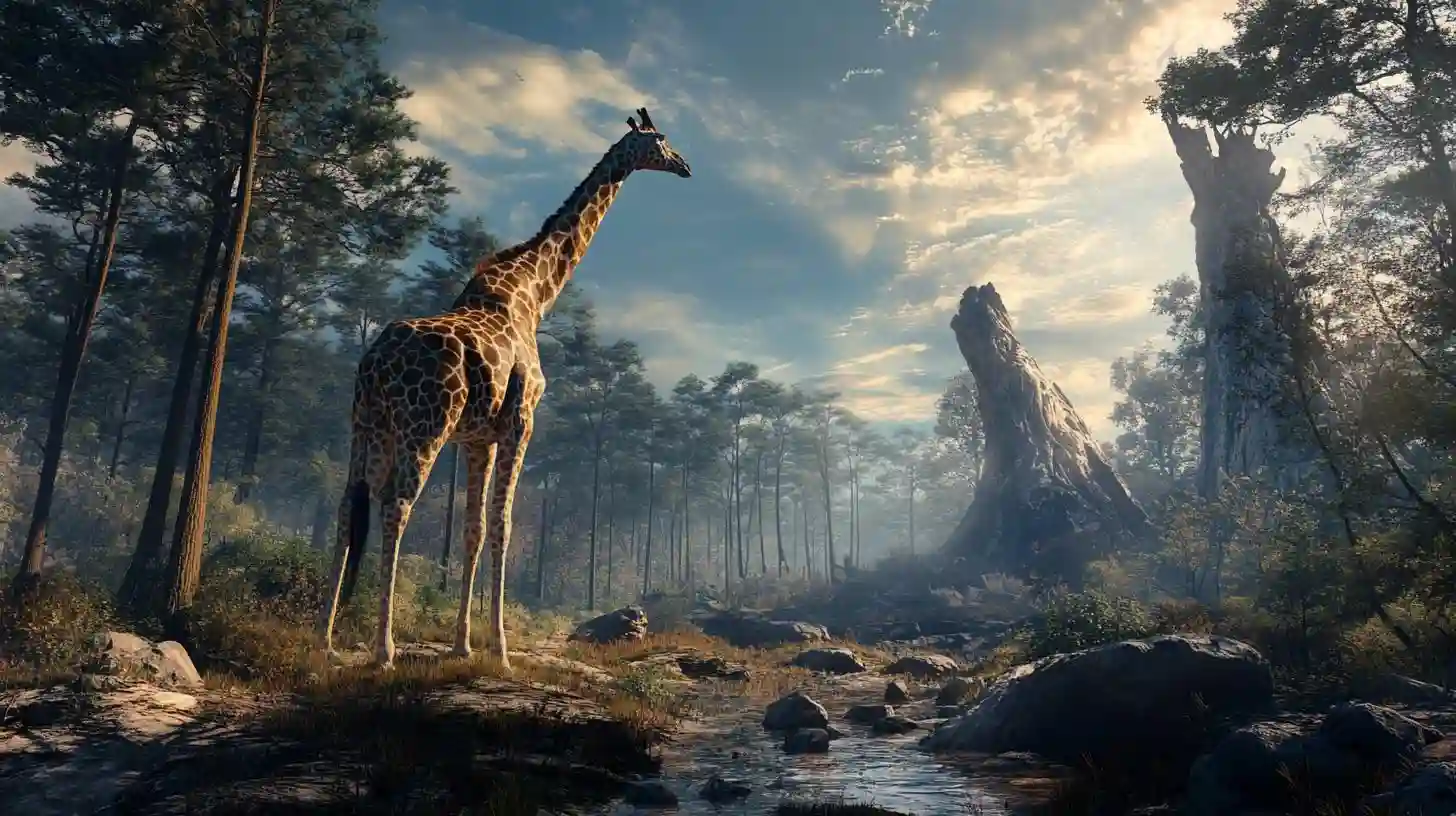
The Free-Giraffe phenomenon has captivated biologists and animal enthusiasts alike, sparking discussions about the peculiarities of mammalian behavior and evolution. The term itself refers to a unique set of behaviors observed within certain mammal populations that seem to transcend traditional survival mechanisms, with a particular focus on social structures and environmental adaptability. This concept encourages researchers to delve deeper into the intricacies of animal interactions and the evolutionary implications behind the observed behaviors.
A critical aspect of understanding the Free-Giraffe phenomenon is the examination of how social hierarchies function within various mammal groups. In particular, the interactions observed in species like elephants or primates hint at a level of complexity that often challenges conventional views of animal behavior. Elephants, known for their strong family bonds, demonstrate remarkable social networks that include cooperative parenting and mourning rituals. Such behaviors not only showcase empathy and emotional depth but also maintain the fabric of their communities, illustrating a sophisticated approach to survival that goes beyond mere instinct.
Moreover, the Free-Giraffe phenomenon raises intriguing questions about individual roles within these societal frameworks. For example, within groups of wolves, the alpha pair typically leads the pack, yet the collaborative efforts of subordinates are essential for hunting and fostering the next generation. This cooperative dynamic suggests that the survival of the group hinges on the contributions of various members, fostering a sense of unity and shared responsibility. The Free-Giraffe phenomenon underscores the importance of these interdependent relationships, highlighting how social structures can influence the success of a species.
The environmental adaptability showcased in this phenomenon is similarly fascinating. Many mammals, including foxes and raccoons, illustrate a remarkable ability to thrive in diverse habitats. This versatility often leads to unexpected behaviors that allow them to capitalize on available resources. For instance, urban-dwelling raccoons have developed innovative techniques for accessing human-generated food sources. Their adaptability highlights the interplay between evolution and environment—how species adjust their behaviors in response to changing surroundings, often leading to surprising outcomes.
In addition to behavioral adaptations, the Free-Giraffe phenomenon invites consideration of the cognitive underpinnings that drive such flexibility. Recent studies reveal that many mammals possess advanced problem-solving skills and a capacity for learning that was once thought to be limited to primates. Dolphins, for instance, demonstrate sophisticated communication and social interaction skills. Their ability to cooperate in hunting and socializing underscores the cognitive demands placed upon these animals, which ultimately contribute to their survival and social cohesion.
As scientists continue to explore the nuances behind the Free-Giraffe phenomenon, the role of communication emerges as a foundational element. The diverse methods of vocalizations, gestures, and even scent-marking used by various mammals illustrate a rich tapestry of interaction that is integral to their social structures. For instance, the intricate vocalizations of whales serve not only to communicate with one another but also play a crucial role in navigation and locating food. By unraveling the complexities of these communication methods, researchers gain deeper insights into how social bonds are formed and maintained within mammalian groups.
Additionally, the Free-Giraffe phenomenon prompts a reevaluation of traditional perspectives on competition within animal societies. While resource scarcity often drives competition, many species display remarkable cooperation that challenges the notion of a purely competitive landscape. The behaviors exhibited in meerkat colonies, where individuals take turns watching for predators while others forage for food, illustrate a nuanced understanding of survival that values teamwork over fierce competition. This perspective fosters a deeper appreciation for the diverse strategies mammals employ to navigate their environments successfully.
In examining the Free-Giraffe phenomenon, one must also consider the implications for conservation. Many of the behaviors that define this phenomenon are under threat due to habitat loss, climate change, and human interference. By focusing on the social structures and environmental adaptability of mammals, conservation efforts can be more effectively tailored to support the preservation of these behaviors and the species that exhibit them. Understanding the intricate connections between social dynamics, adaptability, and cognitive abilities can inform strategies aimed at protecting endangered species and their habitats.
The Free-Giraffe phenomenon invites an expansive exploration of the rich tapestry of mammalian life. By delving into social hierarchies, environmental adaptability, communication, and cooperative behaviors, researchers can uncover the intricacies of species survival and interaction. This ongoing pursuit of knowledge not only expands our understanding of the animal kingdom but also emphasizes the interconnectedness of all living beings, reinforcing the urgency of preserving the delicate balance of ecosystems worldwide.